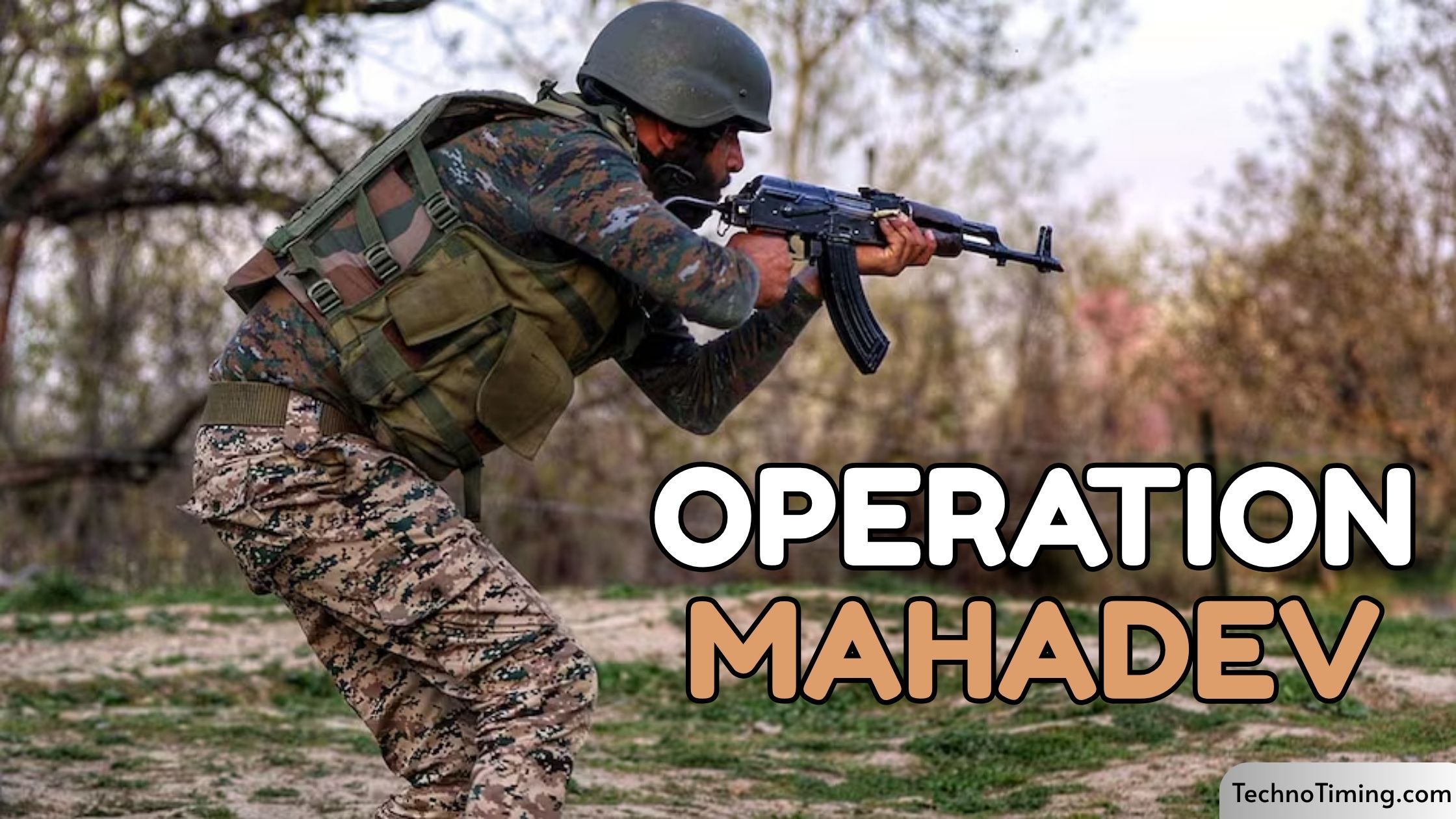Operation Mahadev: A Major Victory Against Terror in Jammu and Kashmir
Introduction to Operation Mahadev
Operation Mahadev stands as one of the most strategic and swift counter-terrorism operations conducted by Indian security forces in recent times. Spearheaded in the aftermath of the Pahalgam terror attack, the operation targeted and neutralized the terrorists responsible for the heinous assault on Indian security personnel. This operation, conducted in Jammu and Kashmir, particularly underlines the government’s zero-tolerance policy towards terrorism and showcases India’s enhanced intelligence capabilities.
Background: The Pahalgam Terror Attack
On July 8, 2024, terrorists launched a deadly attack on a security convoy in Pahalgam, a popular tourist destination in Jammu and Kashmir. The ambush resulted in the death of four brave Indian soldiers, leaving several others injured. The attack shocked the nation and spurred an immediate and comprehensive response from the Indian Army, CRPF, and Jammu and Kashmir Police.
The incident also prompted discussions in Parliament, where Home Minister Amit Shah assured swift action and justice. Within days, Indian intelligence agencies tracked the suspects’ movement and launched Operation Mahadev, a high-intensity counterstrike that eliminated the threat.
Key Objectives of Operation Mahadev
The primary goals of Operation Mahadev were:
- Neutralizing the terrorists responsible for the Pahalgam attack.
- Disrupting terrorist networks operating in South Kashmir.
- Sending a strong message to Pakistan-backed terror groups about India’s readiness and resilience.
- Securing the Amarnath Yatra route and nearby regions ahead of the pilgrimage.
Execution of Operation Mahadev
The operation was carried out in the Kund area of Kulgam district, a known hotbed of militant activity. Based on precise intelligence inputs, a joint team of Rashtriya Rifles, CRPF, and Jammu & Kashmir Police cordoned off the area in a predawn mission.
The encounter lasted several hours, during which three heavily armed terrorists were eliminated. These terrorists were affiliated with The Resistance Front (TRF), an offshoot of the banned Lashkar-e-Taiba (LeT).
Terrorists Identified and Neutralized
According to intelligence reports and official statements:
- All three slain terrorists were directly involved in the Pahalgam ambush.
- They had cross-border links and were in communication with handlers across the Line of Control (LoC).
- Arms recovered included AK-series rifles, grenades, and communication equipment, indicating a well-planned and externally supported mission.
Role of Intelligence and Technology
The success of Operation Mahadev was largely attributed to the synergy between human intelligence (HUMINT) and technical surveillance. Drones, thermal imaging, and advanced tracking systems were deployed to monitor the movements of suspected individuals.
A network of informants and local ground assets provided real-time updates, which helped the task force narrow down the location of the terrorists.
Political and Public Response
Home Minister Amit Shah, addressing the Lok Sabha, lauded the efforts of the forces and emphasized that India will retaliate with double strength to any terror threat. He also reiterated that peace in Jammu and Kashmir is non-negotiable and operations like Mahadev will continue until the region is free from militant influence.
The Indian public, media, and defense experts praised the quick and precise execution of Operation Mahadev, reinforcing the trust in India’s national security framework.
Strategic Significance of the Operation
Operation Mahadev is significant on multiple fronts:
- It showcases India’s improved coordination between military and intelligence agencies.
- It disrupted an emerging terror module in South Kashmir, thereby preventing future attacks.
- It provided a morale boost to the forces stationed in volatile regions.
- It reassured civilians and pilgrims, especially ahead of Amarnath Yatra 2025, which terror groups have often targeted.
Impact on Cross-Border Terrorism
The successful elimination of the Pahalgam attackers also sent a clear message to Pakistan-based terror groups. According to security officials, intercepted communication channels indicate panic and confusion among other modules active in the region.
Indian forces remain on high alert, with additional deployments and surveillance established to pre-empt retaliatory strikes or regrouping attempts.
Ongoing Counter-Terror Operations in Kashmir
Following the success of Operation Mahadev, several follow-up operations have been initiated across Anantnag, Shopian, and Pulwama districts. These operations aim to:
- Dismantle terror hideouts
- Seize illegal arms and funding channels
- Neutralize overground workers (OGWs) who assist terrorist movements
The operations are being carried out under the Unified Command Structure, ensuring every security agency works in coordination and with shared intelligence.
Conclusion: A Bold Stand Against Terrorism
Operation Mahadev marks a critical milestone in India’s ongoing war against terrorism. It highlights the unwavering resolve of Indian security forces, their technological superiority, and the political will to protect every inch of the nation.
The operation didn’t just avenge the deaths in Pahalgam—it restored a sense of security and determination across the country. As we move ahead, such operations will continue to play a vital role in ensuring peace, particularly in the sensitive zones of Jammu and Kashmir.
Also Read:
ऑपरेशन महादेव: जम्मू-कश्मीर में आतंक के खिलाफ भारत की निर्णायक जीत


